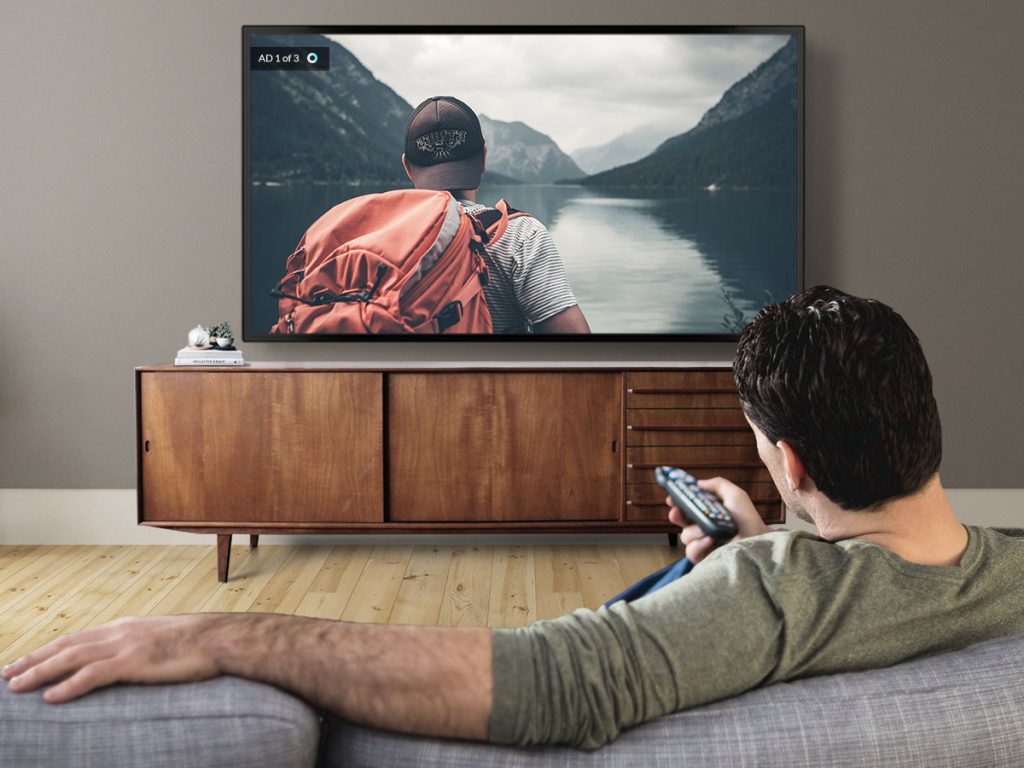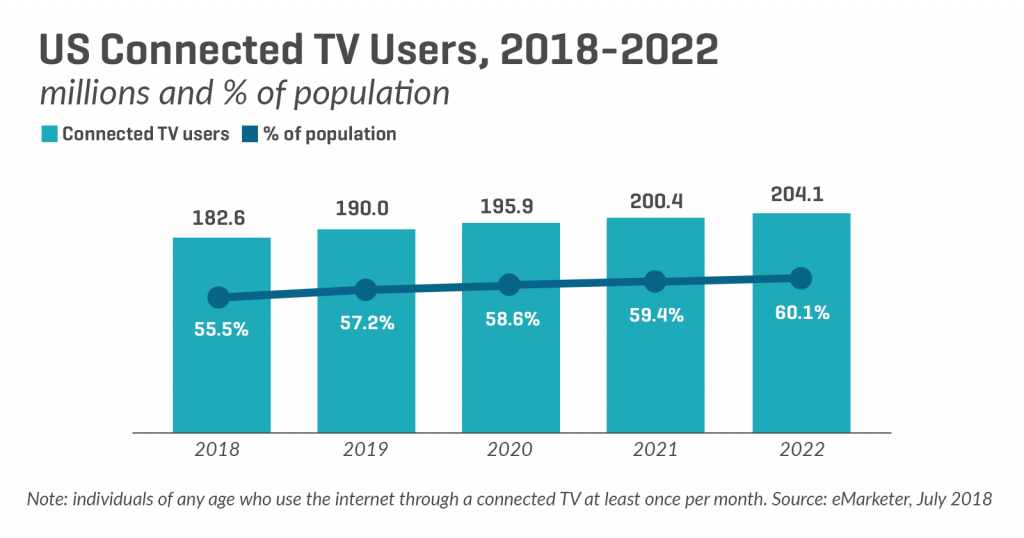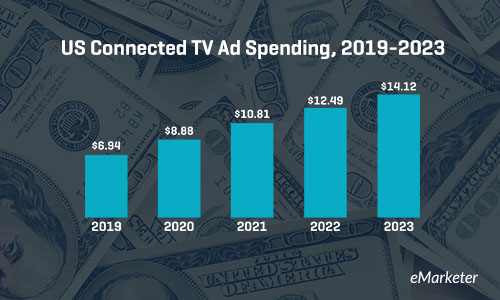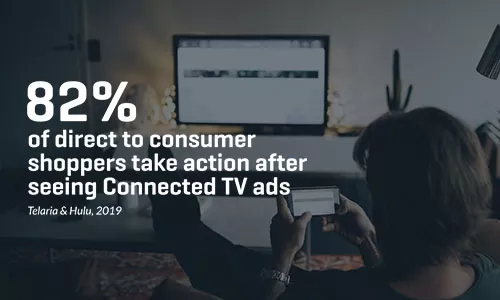B2B Sales Funnel: Complete Guide for Marketers
by Frankie Karrer
8 Min Read
Check out Inc.’s excellent coverage on MNTN’s mission to make TV advertising impactful (and accessible) for all. Learn More
Why Connected TV is the biggest opportunity in advertising, and how advertisers can get started today

17 Min Read
Connected TV is a big opportunity for television advertisers, and there’s much to learn if you want to succeed. We’ve assembled a quick primer on what you need to know about Connected TV and how it compares with traditional television advertising.
Spoiler alert: it’s not even close.
With this guide in hand, you’ll have everything you need to be an expert in TV advertising in 2025.
Television advertising refers to commercial television spots to promote products, services, or brands to a broad audience. These TV ads are broadcast across various networks and channels, locally or nationally, reaching viewers during scheduled programming breaks. For most successful brands, TV advertising is a critical part of their wider marketing strategy.
Now, let’s make a quick distinction. There are two main types of TV marketing.
Linear TV is the traditional form of broadcast television where content is viewed on a predetermined schedule as opposed to on-demand. This form of television caters to prime-time viewing, the time when most individuals are in front of their screens.
Therefore, linear TV advertising is the act of marketing to this prime-time viewing audience on a set schedule.
Linear TV advertising and cable TV advertising are often used interchangeably, and they’re essentially the same thing with a slight distinction. All cable TV is linear, but not all linear is cable TV. For example, other forms of linear TV include satellite and “over the air”. So any medium with a “line up” of shows at set times qualifies as linear.
Streaming TV is the modern approach to watching your favorite shows on your favorite devices, brought to you through an internet connection (no cable box required). This type of on-demand viewing allows users to choose when and where they consume content, as long as they have access to the internet and a smart device like Roku, Apple TV, Amazon Fire TV Stick, etc.
Therefore, streaming TV advertising is marketing material that runs within TV content via an internet-connected device.
Two phrases you’ll often hear in the streaming TV advertising world are Connected TV (CTV) and OTT (Over-the-Top). While these words are often used interchangeably as well, there is a slight difference between them. Connected TV is the device used (usually a smart TV) whereas OTT is the method of content delivery.
See our OTT vs. CTV article for more details.
A brand’s presence on TV can provide a big boost in credibility. TV marketing campaigns expose your brand, your products, and your company’s message to an incredibly large audience. Great TV ads are a core component of demand generation, if not the most important aspect altogether.
The goal, in essence, is to create intriguing, high-quality television ads that will drive potential customers to engage with more in-depth content online.
In other words, television has the power to shift your target audience into your marketing funnel.
There’s a reason why you’re inundated with commercials every time you flip on your favorite shows. TV advertising still works remarkably well. If it didn’t, you wouldn’t see the world’s largest brands continue to dedicate so much of their marketing budgets to television.
This begs the question: Are the largest brands in the world able to advertise on TV because they’re large, or are they large because they advertise on TV?
Interesting thought experiment! Like any marketing channel, you need money to get started. But TV is often underutilized even though its effectiveness is unquestioned.
Before we discuss how incredibly easy Connected TV advertising is to set up and manage, let’s first discuss how traditional TV advertising works.
Here are the typical steps involved in getting your product or service on linear TV, the old-school way:
If all of that seems like a ton of work, that’s because it is! With Connected TV, many of the barriers that have historically prevented companies from advertising on TV have been removed. More on this later.
Next, let’s discuss the pros and cons of traditional broadcast television for a moment. This is important to understand before we bring you back around to CTV.
Why is TV advertising so effective? There are several advantages of TV advertisements to keep in mind.
What are the problems and limitations of television advertising? The following are the disadvantages of linear TV marketing that are worth considering.
We hope this paints a clear picture of the fundamentals of television advertising, why it’s so important, as well as the pros and cons of a traditional television spot. But we’re not done yet! The best part of the article is yet to come.
What if you could have all the advantages of linear TV advertising, with none of the downsides?
Well, you can with Connected TV. Let’s discuss.
If you’re going to learn all about Connected TV, a form of OTT advertising, this is a good starting point. Connected TV is television content streamed over apps and smart TVs, mobile devices, or over-the-top (OTT) devices.
Viewer adoption of Connected TV is high and continues to grow. As more viewers cut the cord from cable and satellite and begin to rely on streaming for their TV entertainment, advertisers will get more access to their target audience which they can serve highly relevant, targeted ads.

Connected TV combines the technical capabilities of digital advertising with the user experience of linear television.
Advertisers can target specific audiences using first and third-party data (just like digital advertising) to serve TV ads to viewers; this gives a lot of creative leverage as advertisers can then customize their message to whoever they are trying to reach. Connected TV takes the “broadcast” out of television, and instead allows for precision-targeted ad campaigns.
Similarly, Connected TV leverages digital capabilities when it comes to measuring ad performance making it superior to traditional TV advertising methods. Advertisers can track ad-side metrics such as ad completion rates, as well as the actions viewers take after seeing the ad like website visits and conversions.
These advantages explain why ad dollars are pouring into the space, with ad spend expected to double by 2023.

“Connected TV is the next big digital channel, and quite frankly, it’s going to be the largest digital advertising channel ever.”
By advertising on Connected TV, advertisers get access to a new performance channel that carries a big impact on audiences. Viewers are making the shift away from cable, and in a way playing right into advertisers’ hands. By changing viewing habits to Connected TV, viewers are watching in an ecosystem that supports targeted advertising, and measurable performance marketing metrics and KPIs.
77% Of Viewers Who Primarily Watch Connected TV Cut the Cord Due to Cost
The days are numbered for oversized cable subscriptions stuffed with channels no one watches. Viewers are cutting down on costs for the content they never use and are making the shift to affordable, ad-supported streaming that gives them more control over when and what they watch.
Connected TV Represents Incremental Growth
Viewers who watch ad-supported content watch over four hours less of traditional TV per week when compared to the average viewer. Couple that with tens of millions of cord-cutters, and it represents a unique way to connect with consumers you may otherwise be unable to reach.
All types of advertisers can reap the rewards, and we have been fortunate to work with Fortune 500 companies through to emerging brands across all types of industries. Specifically, Direct-to-Consumer (DTC) brands love to add CTV advertising to their marketing mix as it directly tracks visitors (and subsequent conversions) to your site from viewing your ad.

The pendulum has been swinging in CTV’s direction, and these DTC brands are quickly catching onto the value of Connected TV advertising. Recent data from the Video Advertising Bureau shows more than a 200% increase in TV advertising spend from 2018, and that 58% of DTC brands are buying TV ads for the first time. Brands like Peloton, Chewy, Third Love, Smile Direct Club, and Purple are investing heavily in this area, with more to come.
We’ve already discussed the advantages and disadvantages of traditional TV advertising, but what about the benefits of Connected TV specifically? The following benefits are truly where CTV platforms like MNTN separate themselves from the competition.
You can display your ads on Connected TV based on first and third-party data to help find the exact target audiences you want to reach. For example, MNTN Performance TV enables you to retarget website visitors with Connected TV ads.

Connected TV ad reporting provides insight into metrics that digital marketers are familiar with. Detailed reporting enables advertisers to know their ad’s impact on delivery, as well as the actions viewers take afterward.
A Sample of Connected TV Ad Metrics
One important thing to note in measuring TV ad performance, however, is that when it comes to reporting not all Connected TV ad platforms are created equal. For example, MNTN Performance TV gives insight into network-level reporting due to it using its own dedicated ad server – this is a metric that is not commonly found with other solutions.
It’s also fully integrated into Google Analytics, meaning advertisers can monitor their performance right alongside the rest of their performance campaigns.
As viewing habits change, so too does the TV landscape. But too many advertisers see Connected TV advertising as a solution for tomorrow and not today. That’s just plain wrong — it is generating strong results for brands right this second, and anyone not advertising on this channel is missing out.
Thanks to its technical capabilities, performance marketing is possible on Connected TV. MNTN Performance TV embodies that and makes performance-oriented goals the centerpiece.
Viewers are making the switch to Connected TV and making a strong case to advertise on CTV. Advertisers are reaping the rewards so don’t get left behind. Want to know how to advertise on TV? Here’s what you need to do to launch your Connected TV ads. It’s easier than you think.
1. Check Your Existing Video Assets
Many brands don’t realize they already have the right video assets to run Connected TV ads. Not a video expert? No problem, show these CTV specs to your video team and they can confirm if you’re good to go or make the appropriate edits to get them ready.
CTV Video Ad Specs
CTV Audio Specs
2. Be Ready with 15 and 30 Second Spots
TV ads run for 15 and 30-second durations, and depending on your brand or message, one runtime may drive better performance. Don’t have a 15-second ad? Edit down your 30-second version so you can test each length and determine which is best for you.
3. Ensure You’re Following Creative Best Practices
While every brand has its own style and approach, there are a few creative elements that will help improve your ad’s performance.
4. Work with a Platform to Make Life Easier
The Connected TV landscape can be fragmented and confusing if you don’t know the lay of the land. Working with a platform like the MNTN Advertising Suite gets you access to premium networks and CTV inventory all in one place, allowing you to run TV ads alongside quality content without having to take a piecemeal approach.
There are several great examples of TV ads that you can model your performance marketing campaigns after. There are several ways to make an effective TV commercial, but here are a few of our favorites!
Here’s a great example of a TV commercial that we use to promote our brand on Connected TV. Sure, having our Chief Creative Officer, Ryan Reynolds, in the ad certainly doesn’t hurt. But it’s the brevity of the message that hits home. CTV is here, it changes television advertising forever, and it’s easy. Take a look!
If you’re an environmentally conscious consumer who loves to travel then Rumpl is for you! This TV advertisement pitches a fashionable blanket made out of recycled materials that speaks directly to the adventurers of the world. It’s a great example of an upbeat ad that gets the key points across in under 30 seconds.
Most of us recognize Sarah McLachlan as not only a singer/songwriter, but also from her ASPCA ads, and that’s the brilliance of this TV commercial. It’s a complete misdirect that carries the somber theme of the ASPCA ads while simultaneously pitching an eCommerce solution for abandoned shopping carts. It’s a hilarious and memorable TV ad that will keep Bolt top of mind for consumers.
If you’re looking for elegant decor for your dining room table, Replacements has you covered! This TV ad example uses the tried and true formula of explaining the problem, offering a solution, and elaborating on the value proposition in under 30 seconds. For the most effective TV commercials, short and sweet is the name of the game.
Last one with Ryan Reynolds, we promise! Besides a clear and concise message, humor is often the best weapon for creating effective television advertisements. This commercial pitches 1Password as the perfect solution for protecting your digital life, and keeping all of your passwords, credit card info, and other valuable data safe. Again, it’s short and sweet and very memorable. Enjoy!
Connected TV advertising has a lot going for it. Adoption rates for streaming television are through the roof, the targeting and analytics allow brands to drive serious performance, and the ad channel is only just beginning.
Discover how Performance TV delivers revenue, conversions and more through the power of Connected TV. Request a demo today to speak to an expert.
MNTN uses cookies to deliver a great user experience on and off of our website. By continuing to browse our site, you agree to our use of cookies.